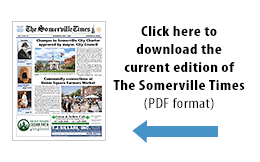 By Mayor Joseph A. Curtatone
By Mayor Joseph A. Curtatone
(The opinions and views expressed in the commentaries of The Somerville News belong solely to the authors of those commentaries and do not reflect the views or opinions of The Somerville News, its staff or publishers.)
When it comes to planning we spend a lot of time talking about buildings, infrastructure and roads. Obviously those are the physical structures we have to pay for or permit when a new project comes along, but those are not the reasons why we engage in planning in the first place. People are our priority.
Specifically, making Somerville a great place for people to live, work, play and raise a family is our priority. And what we’re trying to work towards with the new Comprehensive Plan and the zoning changes the City has made in areas like Union Square and along Broadway is to accentuate the human needs in our community.
We need green space, more local jobs and locally run businesses, affordable housing, community gathering space, more public transit, tree-lined neighborhoods, walkable streets, a diverse population, and recreational space. All of these things address the human needs inside our city.
That is exactly what Somerville’s leaders did not do back in the 1950s and 1960s. They ripped up the trolley lines, tried to turn the city into a suburb, and ushered in an era where every new road was designed to help people bypass or leave Somerville. Frankly, they cared more about cars than people, and it brought on the bad, old days when this city gained the nickname of Slummerville.
We are now undoing those failed policies, but it takes time. For instance, since I took office seven years ago we have built or reconstructed 26 new parks and playgrounds. Somerville homes do not generally have big yards and it makes a positive difference in people’s lives to have some attractive, well-kept public space in the neighborhood.
We all know the transformation that took place in Davis Square when the T stop was built there almost three decades ago. Well, the Orange Line will be stopping in Assembly Square in a few years as part of the redevelopment of that area, and the Green Line will be close on its heels, running through the heart of the city.
It will mean that you can get around Somerville by hopping on a train. That is in addition to a city that is friendlier to pedestrians (better lighting, better sidewalks, safer neighborhoods) and roads that also accommodate bicyclists. We have a diverse city and we have to plan for more than one type of person to get around this city.
And as rail transit returns, we are going to plan for growth in our city squares. We need to foster more commercial space while also preserving our residential neighborhoods. It will require a balancing act.
On one hand Somerville has only 0.44 jobs for every working age adult in the city. That number is far too low for a city with an educated and skilled workforce. Beyond that, our relatively small amount of commercial space means local homeowners bear more of the brunt of funding city services. This is why redeveloping areas like Assembly Square, the Inner Belt, Brickbottom and Boynton Yards is essential. The people of Somerville need those jobs and the people of Somerville need a larger commercial tax base to defray their taxes.
Yet the people also need housing. The demand for housing in this city is well above the supply. We need affordable housing, mid-range housing and even high-end housing. In areas like Assembly Square and Union Square we will see taller buildings. In more residential areas, it will be more modest projects. Yet all are needed to alleviate the pent up demand in our housing market. We are fighting a rising tide on housing prices until that happens.
Also, we need to recognize that Somerville is a city, not a suburb. We are trying to make it a city built on a human scale, but it is still a city. We cannot build oceans of parking around every new housing and commercial project. We do not have the physical space for it. The people who work and move into this city will need to avail themselves of public transit.
Like I said before, we tried to build a city primarily for cars in the past and it failed. All it got us was congested roads and pollution. We are designing this city for humans, not for cars. Automobiles are only part of the picture.
The bigger part of that picture is a city where you live near where you work, near where you shop, near where you go to school. We are planning for a future where the people of Somerville enjoy a high quality of life regardless of their race, ethnicity or tax bracket.
It is a balance we can achieve. The key is to put people first.















Reader Comments